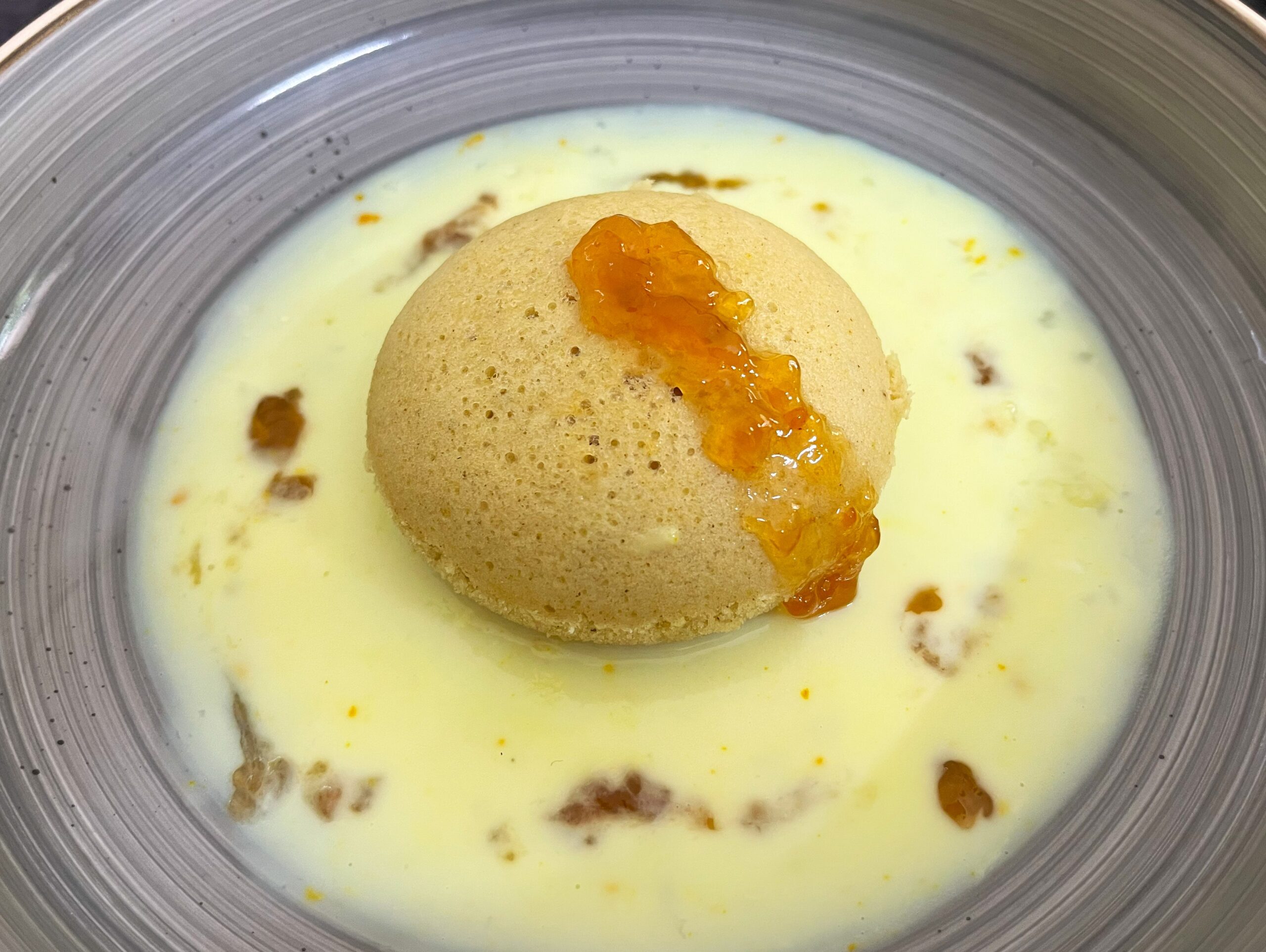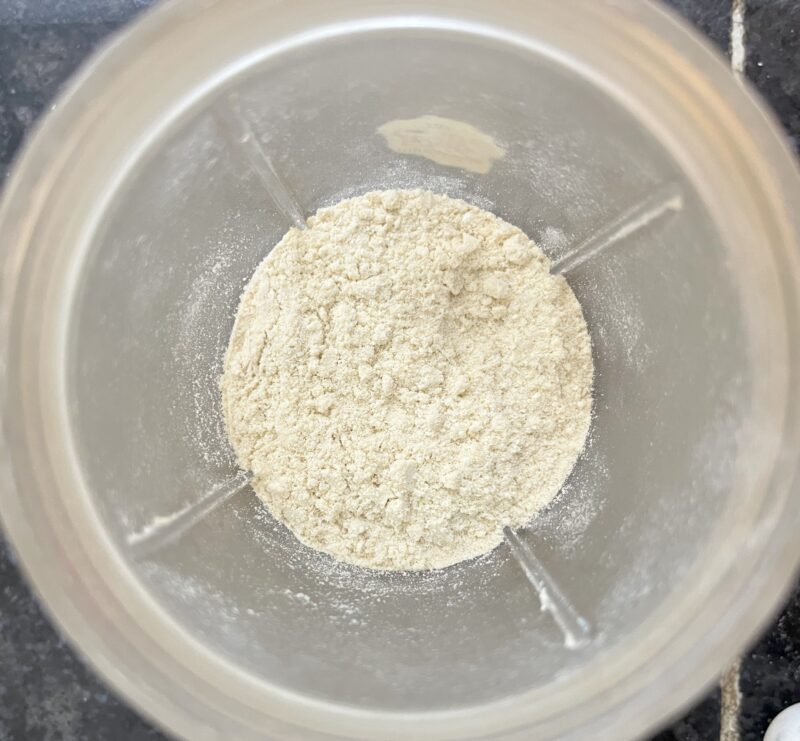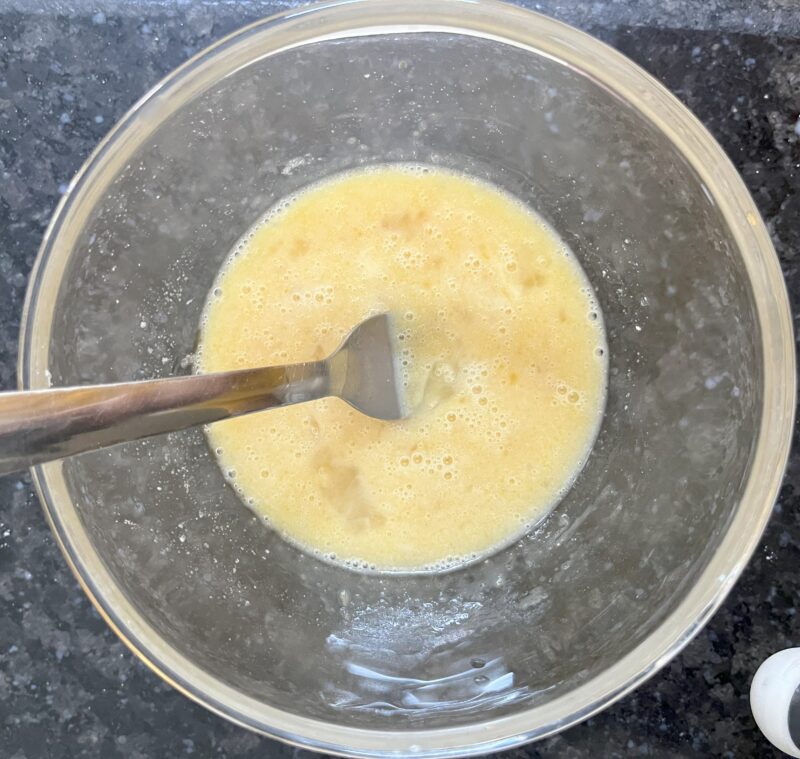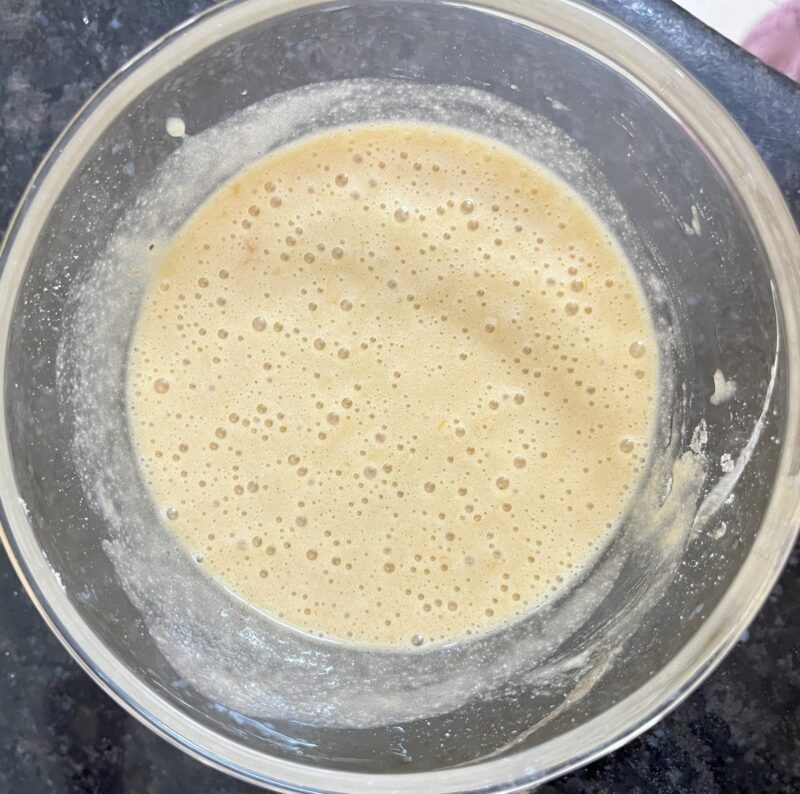
| Foxtail millet flour | 6 tablespoons |
|---|---|
| Sugar, powdered | 4 tablespoons |
| Baking powder | 2 teaspoons |
| Salt | a pinch |
| Eggs (whole) | 2 |
| Butter, melted | 2 tablespoons |
| Fruit jam (flavour of choice) | 6 tablespoons (including 2 tablespoons for garnishing) |
| Milk | 2 to 3 teaspoons |
What You Will Need
Measuring cups and spoons, mixing bowls, steaming bowl, spatula, steamer, grinder
Instructions
Add the foxtail millet flour along with the powdered sugar, baking powder, and salt in a bowl and mix well. If you have granulated sugar, powder it first in a grinder and then add it to the remaining dry ingredients.

In a separate bowl, beat the eggs well so that the whites and the yolks are thoroughly mixed. Gradually add in the melted butter and jam of choice. Mix thoroughly.

Add the wet ingredients to the dry mixture and fold in (using a spatula to turn the mixture over itself, rather than stirring). Add the milk at this stage to adjust the consistency to that of a cake batter.

The traditional method involves steaming the batter in a steamer for about 8 to 10 minutes till a knife comes out clean when inserted at the centre.


Once the Roly Poly cools down to room temperature, serve it with a dollop of jam on top and homemade custard on the side for a delightful treat.
Tips:
- Avoid over-beating the eggs or the batter; gentle mixing is key to getting the right texture for the Roly Poly.
- Steaming takes only a few minutes, and the Roly Poly sets without much change in colour on its surface.
- To make custard with custard powder, first mix the powder with a little cold milk to make a smooth paste. Pour this into hot milk with sugar and cook while stirring until it thickens. If you are making the custard using egg yolks, whisk the yolks with sugar, then slowly add warm milk while whisking so the eggs don’t scramble. Put it back on the stove and stir on low heat until the custard thickens enough to coat the back of a spoon.
Variations:
- Other versions of the Roly-Poly recipe consist of using the same ingredients but making a dough rather than a batter (omit using the milk and jam and increase the quantity of flour). After rolling the dough into a sheet, place the jam as a layer. Roll it and then steam-cook it. Cut the rolls into slices, and serve them with jam, custard or cream.
- You can use any preferred jam or make one’s own jam/thick compote with flavour pairings such as chocolate-vanilla, chocolate-orange, strawberry-mint, apricot-cinnamon or rose-pistachio.
- Use spices such as nutmeg, cardamom, or cinnamon for a richer flavour profile.
- You can use jaggery powder, coconut sugar, or honey instead of sugar for a healthier sweetener alternative.
- A microwave or OTG can also be used instead of steaming. Bake at 180°C for about 30-35 minutes till the outside of the Roly Poly turns beautifully golden. A knife, when inserted at the centre, should come out clean. Keep a check on the Roly Poly when cooking in a microwave / OTG. The colour of its surface changes much sooner than in the steamed version. The resultant Roly Poly will be cake-like in texture, and not as airy as when made using the traditional steamed version.
Food technologist Twinkle Suri is a volunteer with the Millet Revival Project’s Cooking Lab. She was a research scientist for an FMCG brand before switching to the role of a home chef. Her kitchen experiments can be found at myebrew.com.
You must be logged in to rate this recipe.

Sign in with email
